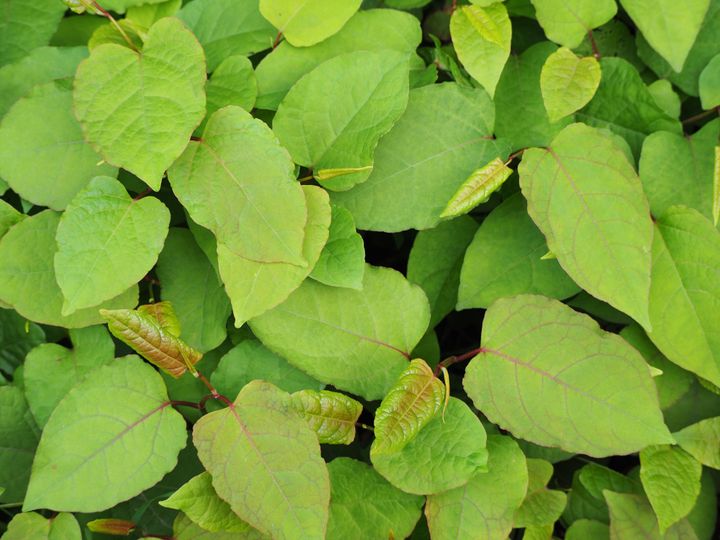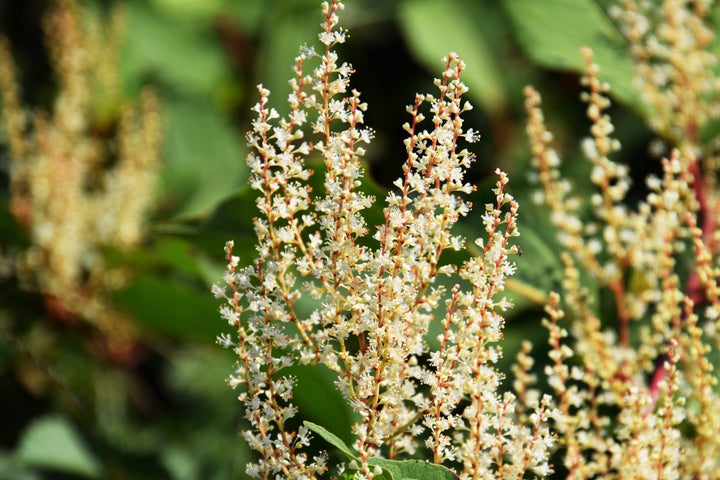
Japanese knotweed is an invasive plant thought to be lurking around at least 5% of UK homes – and it can be a nightmare, capable of forcing its way through concrete and subsequently damaging houses, undermining foundations and blocking drains.
It’s hard to control, spreading as quick as 10cm a day underground. And having it near your property is enough to cut the value by 10% – around £24,000 per home. Research by comparison site HaMuch.com suggests it’s collectively wiping off £34.12bn in value from house prices up and down the UK. It might also prevent a mortgage lender granting a loan.
The plant originated from eastern Asia and there are various reports as to why it was imported to Britain. Some say the “beautiful” plant intended to be used in residential gardens; others say it was to stabilise railway embankments.
In 2012, the Environment Agency commissioned a new app, Plant Tracker, to locate Japanese knotweed on a map. Thousands of people downloaded it, and shared data on many knotweed locations.
It usually lies dormant throughout winter – but in two months time it will start to rear its head again. So why is it such a nightmare? Can’t you just dig it up and chuck it in the bin?
The answer: it’s complicated.
First up, what does Japanese knotweed look like?
You might not be able to tell whether you’ve got a knotweed problem at the moment, as the plant doesn’t surface in winter. Come spring, however, reddish-purple fleshy shoots begin to sprout from crimson-pink buds at ground level.
They might seem fairly harmless, but these shoots can grow rapidly. The stalks, which grow up to seven feet tall, have purple flecks on them, states the Royal Horticultural Society (RHS). The leaves are “heart or shovel-shaped” and up to 14cm in length.
In late summer and early autumn, the plant produces strings of white flowers which can grow up to 15cm long.

Is it really as bad as we think?
The main concern with Japanese knotweed is that it can damage buildings – a claim that has been widely held for years. However, a 2018 study suggested the plant might not be as bad as originally thought.
Ecologists from the University of Leeds assessed the potential of Japanese knotweed to cause structural damage compared to other plants and found nothing to suggest it does – even when it grows in close proximity to buildings.
One of the study’s authors, Dr Karen Bacon, said the plant is capable of damaging built structures, but where this occurs, it’s usually “because an existing weakness or defect has been exacerbated”. For example, the plant can grow through cracks in brickwork, eventually forcing walls to break apart.
It might not be as terrible as first thought for newer buildings, but Bacon added that “the negative impact of Japanese knotweed on biodiversity and flooding risks remains a cause for concern”.
The plant is also feared due to its ability to survive at all costs. It can thrive in many types of soil, spread quickly and, because it sprouts from underground roots called rhizomes, it can grow back easily from a tiny fragment – even if you try to remove it all. To add insult to injury, chemicals don’t work well on it either – it usually takes at least three to four seasons to eradicate Japanese knotweed using weedkiller, says the RHS.
There are legal consequences to having Japanese knotweed, too. Since 2013, people selling their homes have to declare whether they have the weed on a TA6 form – this gives detailed information about a property from a seller to prospective buyer. This can, in turn, put potential buyers off, as they might struggle to get a mortgage. Mortgage lenders need assurances that the plant will be eradicated before agreeing to release funds.
Not treating your knotweed problem can also result in issues with neighbours if it spreads elsewhere. In some cases, legislation could be used to enforce its control and property owners may be prosecuted.

How to get rid of it
The cost of dealing with Japanese knotweed is hefty. It can be thousands of pounds for even a modest-sized garden, taking as long as five years to treat fully. But treating the issue is infinitely better than leaving it be.
Don’t try to do it yourself, though, because you’re unlikely to get rid of it all – and then you’ll be back to square one. If you dig it up, you can’t chuck it in the bin because it’s classified as ‘controlled waste’ under the Environmental Protection Act 1990. You need to dispose it at a licensed landfill site. If you cause Japanese knotweed to spread, by disposing of it incorrectly, you’re guilty of an offence under the Wildlife and Countryside Act 1981.
The best solution is to get professionals in, preferably a member of the Property Care Association (PCA) Invasive Weed Control Group, which provides a register of vetted consultants and contractors.
Environet UK, a Japanese knotweed removal company, estimates that it costs the average homeowner £2,500 to treat the issue with herbicide and £5,000 upwards to excavate it. These are the two main ways to treat it.
Nic Seal, founder and managing director, said the traditional herbicide method is carried out between April and October, because it requires the plant to be in leaf, and usually takes two or three growing seasons to complete.
However, offering a much greater degree of certainty is excavation of the entire plant. “This can be done in a matter of days, at any time of year, using a mini-digger to remove the rhizome from the ground where every viable piece is separated from the soil,” Seal explained.
Whatever work you have done, make sure you get an insurance backed guarantee as this helps when it comes to selling the property or dealing with complaints.